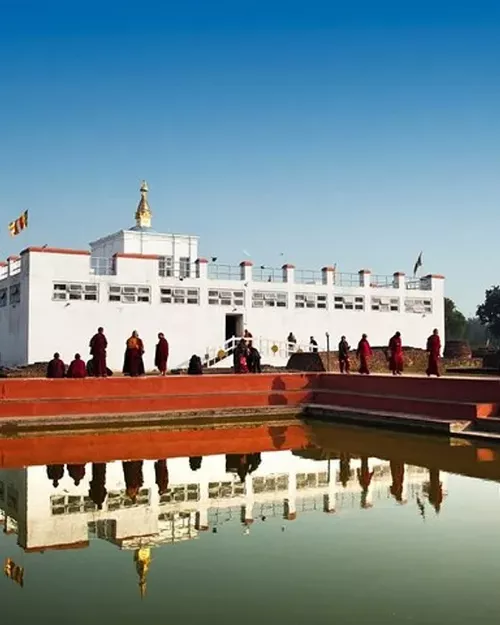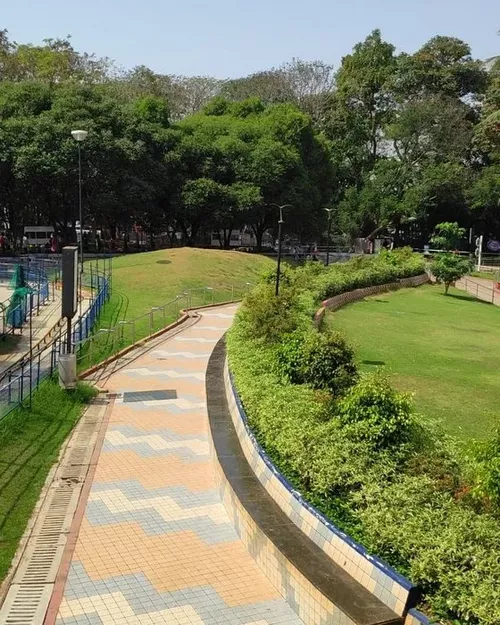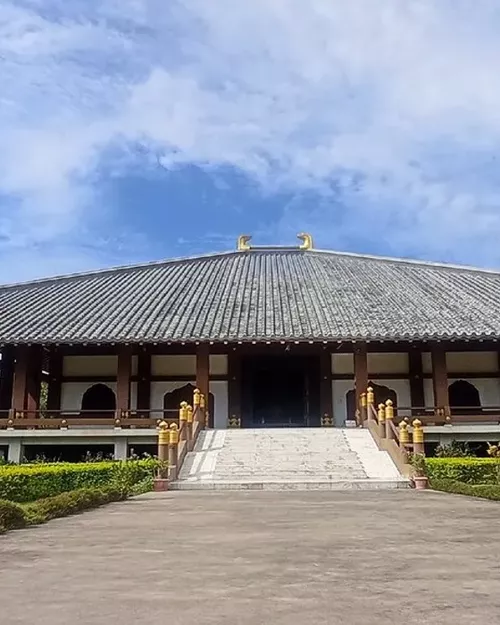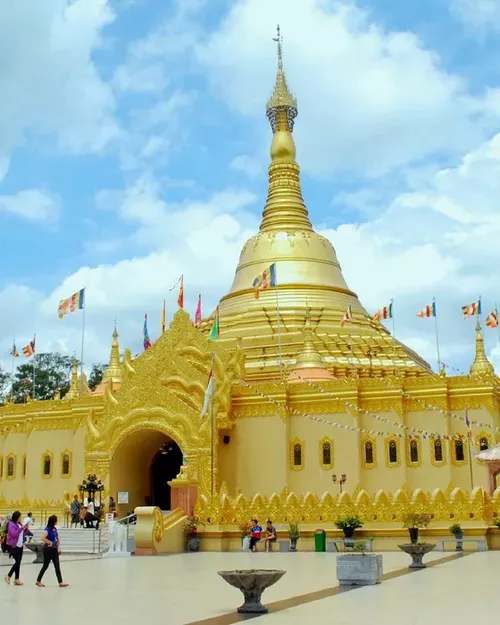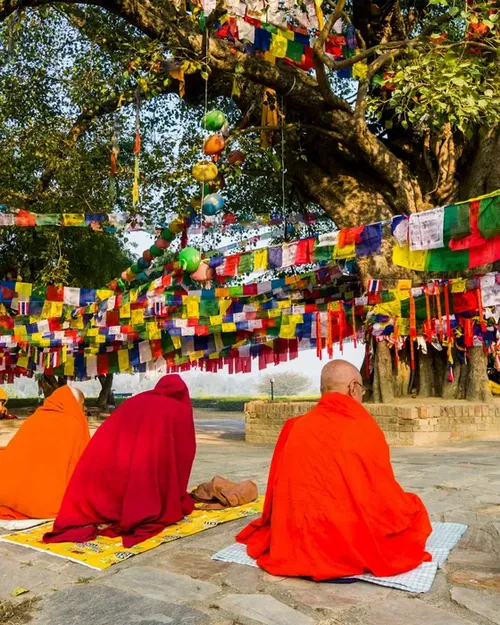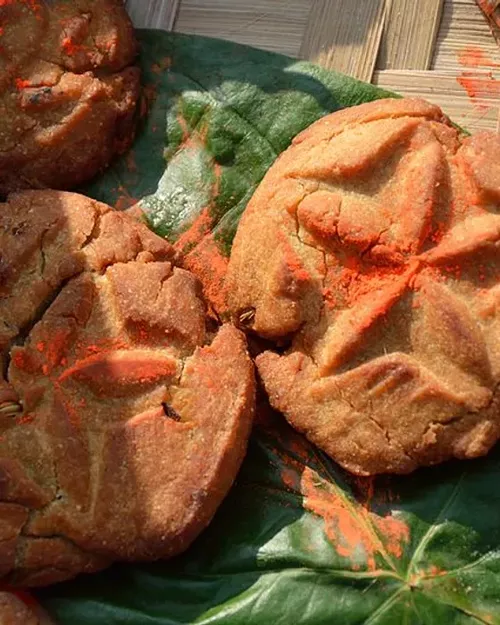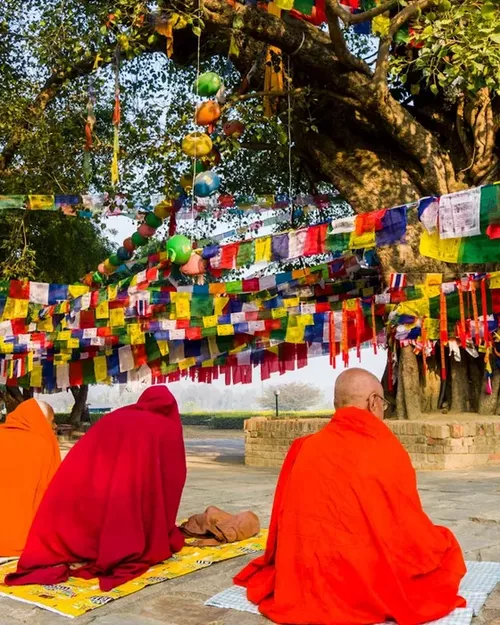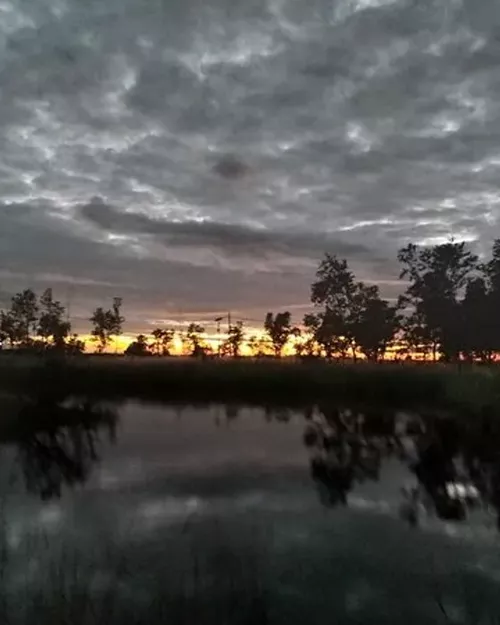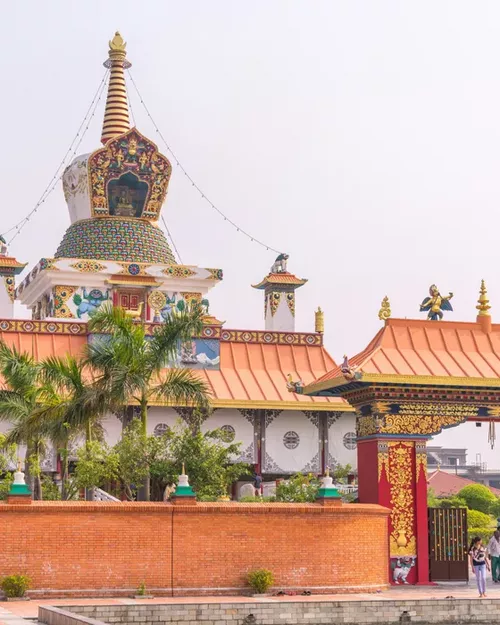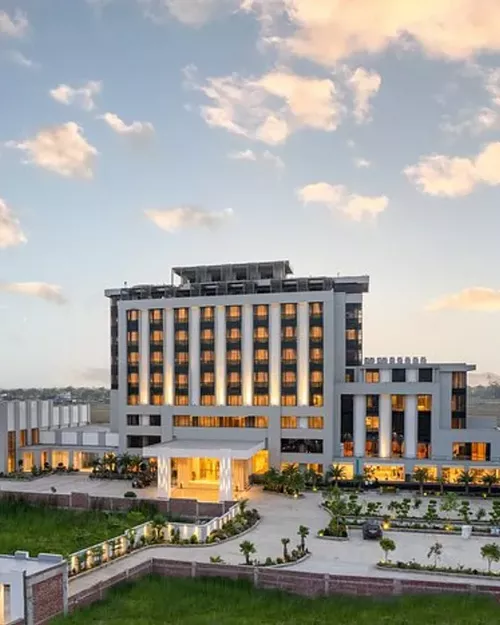Lumbini is popular for
Lumbini in next 3 month
Weather in Lumbini
December in Lumbini is cool and misty with moderate air quality, making it a pleasant time to visit.
Usual trip duration
A 2-3 day trip to Lumbini allows you to explore the birthplace of Buddha, visit the sacred garden, and immerse yourself in the peaceful and spiritual atmosphere of this UNESCO World Heritage site.
Very budget friendly
Ideas To Plan Your Trip
Places To Visit
Places To Eat
Frequently Asked Questions about Lumbini, Nepal
The best time to visit Lumbini, Nepal, is during the cooler months from October to March. This period offers the most pleasant weather for exploring the sacred sites and gardens. The temperature ranges from 10°C to 25°C, making it comfortable for outdoor activities. Avoiding the monsoon season (June to September) is highly recommended due to heavy rainfall and potential flooding. The shoulder seasons of April-May and September-October can also be considered, although temperatures may be slightly warmer. Visiting during Buddha Purnima (usually in May) allows you to witness grand celebrations commemorating Buddha's birth.
Lumbini, a UNESCO World Heritage site, is rich in historical and spiritual significance. Here are some key attractions you shouldn't miss:
| Attraction | Description |
|---|---|
| Maya Devi Temple | The most sacred site in Lumbini, marking the exact place where Queen Maya Devi gave birth to Siddhartha Gautama (the Buddha). It houses ancient ruins and the Nativity Sculpture. |
| Sacred Garden | Encompassing the Maya Devi Temple, the Sacred Garden is a serene area with the Ashoka Pillar, the Sacred Pond (Puskarini), and ancient ruins of monasteries. |
| World Peace Pagoda | Built by Japanese Buddhists, this stunning white pagoda is a symbol of peace and offers panoramic views of the Lumbini complex. |
| Lumbini Museum | Showcasing artifacts, photographs, and historical documents related to Lumbini's history and Buddhist heritage. |
| International Monastic Zone | A vast area with monasteries built by various countries, each reflecting unique architectural styles and Buddhist traditions. |
Reaching Lumbini is relatively straightforward, with multiple options depending on your starting point:
| Mode of Transport | Details |
|---|---|
| By Air | The nearest airport is Gautam Buddha Airport (BWA) in Bhairahawa (also known as Siddharthanagar), about 20 km from Lumbini. Regular flights connect Bhairahawa to Kathmandu. From the airport, you can hire a taxi or take a local bus to Lumbini. |
| By Road | Lumbini is well-connected by road to major cities in Nepal and India. Direct buses are available from Kathmandu, Pokhara, and other towns in Nepal. You can also hire a private car or taxi. From the Indian side, you can cross the border at Sunauli and take a local bus or taxi to Lumbini. |
| By Train (India) | The nearest railway station in India is Gorakhpur, Uttar Pradesh. From Gorakhpur, you can take a bus or hire a taxi to the Sunauli border, cross into Nepal, and then proceed to Lumbini. |
Lumbini offers a range of activities centered around spirituality, culture, and tranquility:
- Meditation and Mindfulness: Engage in meditation sessions at various monasteries and meditation centers in the International Monastic Zone.
- Exploring Monasteries: Visit the numerous monasteries built by different countries, each showcasing unique architectural styles and Buddhist teachings.
- Bike Riding: Rent a bicycle and explore the vast Lumbini Development Zone at your own pace. This is a great way to see the gardens and monasteries.
- Visiting the Lumbini Museum and Research Centre: Delve deeper into the history and archaeology of Lumbini.
- Pilgrimage Tour: Visit other significant Buddhist sites in the surrounding areas, such as Tilaurakot (ancient Kapilavastu) and Kudan.
Several interesting destinations are within reach of Lumbini, offering a glimpse into the region's history and culture:
| Destination | Distance | Highlights |
|---|---|---|
| Tilaurakot (Kapilavastu) | 27 km | The ancient capital of the Shakya kingdom where Siddhartha Gautama spent his early life as a prince. |
| Kudan | 25 km | The site where Buddha met his father, King Suddhodhana, after his enlightenment. |
| Devadaha | 55 km | The maternal home of Queen Maya Devi and the birthplace of Prajapati Gautami, Buddha's stepmother. |
| Butwal | 60 km | A major commercial city with access to hill stations and scenic landscapes. |
While Lumbini is primarily a spiritual destination, there are still opportunities for souvenir shopping. Don't expect large malls or bustling markets; instead, focus on smaller shops offering religious and cultural items:
- Local Shops near Maya Devi Temple: These shops sell prayer beads, Buddha statues, incense, prayer flags, and other religious items.
- Handicraft Shops: Look for shops selling locally made handicrafts, such as thangkas (Buddhist paintings), wooden carvings, and textiles.
- Fair Trade Shops: Support local artisans by purchasing fair trade products.
- Monastery Shops: Some monasteries may have small shops selling items related to their specific Buddhist tradition.
Lumbini offers a variety of dining options, ranging from simple local eateries to restaurants catering to international tourists:
| Cuisine Type | Restaurant/Location | Notes |
|---|---|---|
| Nepali/Indian | Three Sisters Restaurant | Known for its diverse menu and pleasant ambiance. |
| Nepali/Continental | Kasai's Kitchen | Offers a good selection of Nepali and Continental dishes. |
| Korean | Korean Monastery Restaurant | Authentic Korean cuisine within the Korean Monastery. |
| Local Eateries | Various Local Teahouses | Simple meals like dal bhat (rice, lentils, and vegetables) and momos (dumplings). |
Lumbini offers a range of accommodation options to suit various budgets and preferences:
- Luxury Hotels: Some high-end hotels offer modern amenities, comfortable rooms, and on-site restaurants.
- Mid-Range Hotels: These hotels provide a good balance of comfort and affordability.
- Guesthouses: Guesthouses are a budget-friendly option, offering basic rooms and a chance to interact with local families.
- Monastery Stays: Some monasteries offer accommodation to visitors, providing a unique and peaceful experience.
- Eco-Lodges: These lodges focus on sustainable tourism and offer a tranquil stay in natural surroundings.
Here are some helpful tips to ensure a smooth and meaningful trip to Lumbini:
- Dress Respectfully: As a sacred site, it's important to dress modestly. Avoid wearing revealing clothing.
- Remove Shoes: You will need to remove your shoes before entering temples and monasteries.
- Stay Hydrated: The weather can be hot and humid, so drink plenty of water.
- Carry Insect Repellent: Mosquitoes can be prevalent, especially during the rainy season.
- Respect Local Customs: Be mindful of local customs and traditions. Avoid loud noises and disruptive behavior.
- Bargain Respectfully: If shopping at local shops, bargain politely and respectfully.
- Carry Cash: While some establishments may accept credit cards, it's advisable to carry cash, especially for smaller shops and transportation.
The Ashoka Pillar is a significant historical marker in Lumbini, erected by Emperor Ashoka of the Mauryan Empire in 249 BCE. It commemorates Ashoka's visit to Lumbini and his conversion to Buddhism. The pillar bears an inscription confirming Lumbini as the birthplace of Buddha. The inscription reads, "Here was born the Buddha Shakyamuni." The Ashoka Pillar is not only a testament to the historical importance of Lumbini but also serves as a symbol of Ashoka's devotion to Buddhism and his efforts to spread the teachings of peace and compassion. It is one of the earliest known epigraphic records related to the life of Buddha and is a vital source of information for historians and archaeologists studying the early history of Buddhism.
Yes, Lumbini hosts several significant festivals and events throughout the year, with Buddha Purnima being the most prominent:
- Buddha Purnima (Vesak): Celebrated in May, Buddha Purnima commemorates the birth, enlightenment, and death of Buddha. This is the most important festival in Lumbini, attracting pilgrims and tourists from all over the world. The celebrations include special prayers, processions, cultural performances, and the bathing of the Buddha statue in the Maya Devi Temple.
- Lumbini Festival: Organized annually, the Lumbini Festival showcases the cultural and religious heritage of Lumbini and the surrounding region. The festival features exhibitions, cultural shows, food stalls, and religious discourses.
- Other Buddhist Festivals: Various monasteries in Lumbini celebrate their own unique festivals and events based on their specific Buddhist traditions. Check with individual monasteries for their schedules.
Visiting during these festivals offers a unique opportunity to witness the vibrant religious and cultural traditions of Lumbini.
It is generally not advisable to drink tap water in Lumbini. The water quality may not be safe for consumption due to potential contamination. It's best to rely on safe alternatives:
- Bottled Water: Bottled water is readily available in shops and restaurants throughout Lumbini. Ensure the bottle is sealed before consumption.
- Purified Water: Many hotels and guesthouses offer purified water for drinking.
- Boiled Water: If bottled or purified water is not available, boiling tap water for at least one minute can kill most harmful bacteria and viruses. Let it cool before drinking.
Staying hydrated is crucial, especially in the warm climate, so prioritize safe water options during your visit.
When packing for a trip to Lumbini, consider the climate, the religious significance of the site, and the activities you plan to undertake:
- Lightweight and Breathable Clothing: Pack lightweight and breathable fabrics like cotton or linen, especially if you are visiting during the warmer months.
- Modest Clothing: As Lumbini is a sacred site, dress respectfully. Avoid wearing revealing clothing such as short shorts, tank tops, and low-cut dresses, especially when visiting temples and monasteries.
- Long Pants or Skirts: Opt for long pants or skirts that cover your knees.
- Loose-Fitting Tops: Choose loose-fitting tops with sleeves that cover your shoulders.
- Comfortable Shoes: You will be doing a lot of walking, so pack comfortable walking shoes.
- Sandals or Flip-Flops: Useful for easily removing shoes when entering temples.
- Hat and Sunglasses: Protect yourself from the sun with a hat and sunglasses.
- Warm Layers: If you are visiting during the winter months (October to March), pack warm layers such as sweaters, jackets, and scarves, as temperatures can drop in the evenings.
- Rain Gear: If you are visiting during the monsoon season (June to September), pack rain gear such as a raincoat or umbrella.




